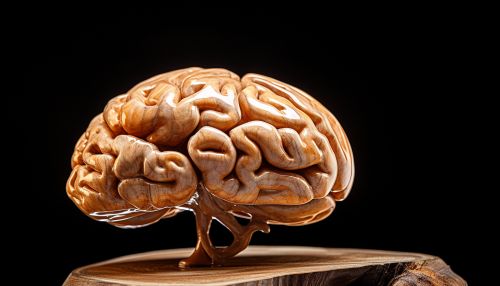Executive Functions
Overview
Executive functions are a set of cognitive processes that are necessary for the cognitive control of behavior. These processes allow individuals to select and successfully monitor behaviors that facilitate the attainment of chosen goals. Executive functions include basic cognitive processes such as attentional control, cognitive inhibition, inhibitory control, working memory, and cognitive flexibility. Higher order executive functions require the simultaneous use of multiple basic executive functions and include strategic planning, problem solving, and goal-directed behavior 1(https://www.ncbi.nlm.nih.gov/pmc/articles/PMC4084861/).


Basic Executive Functions
Attentional Control
Attentional control refers to an individual's capacity to choose what they pay attention to and what they ignore. It is a crucial component of executive functioning as it is the basis for all other executive functions 2(https://www.ncbi.nlm.nih.gov/pmc/articles/PMC4084861/).
Cognitive Inhibition
Cognitive inhibition is the mind's ability to tune out stimuli that are irrelevant to the task/process at hand or to the individual's current state. Inhibition is a cognitive process that allows an individual to inhibit their impulses and natural, habitual, or dominant behavioral responses to stimuli 3(https://www.ncbi.nlm.nih.gov/pmc/articles/PMC4084861/).


Inhibitory Control
Inhibitory control, also known as response inhibition, is a cognitive process that permits an individual to inhibit their impulses and natural, habitual, or dominant behavioral responses to stimuli 4(https://www.ncbi.nlm.nih.gov/pmc/articles/PMC4084861/).
Working Memory
Working memory is the ability to hold and manipulate information in the mind over short periods of time. It is a fundamental executive function that enables one to retain and manipulate distinct pieces of information over short periods 5(https://www.ncbi.nlm.nih.gov/pmc/articles/PMC4084861/).


Cognitive Flexibility
Cognitive flexibility is the mental ability to switch between thinking about two different concepts, and to think about multiple concepts simultaneously. It is a crucial aspect of executive function as it allows for flexibility of thought 6(https://www.ncbi.nlm.nih.gov/pmc/articles/PMC4084861/).
Higher Order Executive Functions
Higher order executive functions require the simultaneous use of multiple basic executive functions and include strategic planning, problem solving, and goal-directed behavior.
Strategic Planning
Strategic planning is the ability to identify and organize steps needed to achieve a goal. It is a higher-order executive function that involves the ability to formulate, evaluate and choose appropriate strategies to achieve a goal 7(https://www.ncbi.nlm.nih.gov/pmc/articles/PMC4084861/).


Problem Solving
Problem solving is the mental process that people go through to discover, analyze, and solve problems. This involves all the steps that must be taken to reach a solution 8(https://www.ncbi.nlm.nih.gov/pmc/articles/PMC4084861/).
Goal-Directed Behavior
Goal-directed behavior is the ability to initiate and complete a task with a particular goal in mind. It involves the ability to formulate, evaluate and choose appropriate strategies to achieve a goal 9(https://www.ncbi.nlm.nih.gov/pmc/articles/PMC4084861/).


See Also
References
1. Diamond, A. (2013). Executive Functions. Annual Review of Psychology, 64, 135-168. https://www.ncbi.nlm.nih.gov/pmc/articles/PMC4084861/ 2. Diamond, A. (2013). Executive Functions. Annual Review of Psychology, 64, 135-168. https://www.ncbi.nlm.nih.gov/pmc/articles/PMC4084861/ 3. Diamond, A. (2013). Executive Functions. Annual Review of Psychology, 64, 135-168. https://www.ncbi.nlm.nih.gov/pmc/articles/PMC4084861/ 4. Diamond, A. (2013). Executive Functions. Annual Review of Psychology, 64, 135-168. https://www.ncbi.nlm.nih.gov/pmc/articles/PMC4084861/ 5. Diamond, A. (2013). Executive Functions. Annual Review of Psychology, 64, 135-168. https://www.ncbi.nlm.nih.gov/pmc/articles/PMC4084861/ 6. Diamond, A. (2013). Executive Functions. Annual Review of Psychology, 64, 135-168. https://www.ncbi.nlm.nih.gov/pmc/articles/PMC4084861/ 7. Diamond, A. (2013). Executive Functions. Annual Review of Psychology, 64, 135-168. https://www.ncbi.nlm.nih.gov/pmc/articles/PMC4084861/ 8. Diamond, A. (2013). Executive Functions. Annual Review of Psychology, 64, 135-168. https://www.ncbi.nlm.nih.gov/pmc/articles/PMC4084861/ 9. Diamond, A. (2013). Executive Functions. Annual Review of Psychology, 64, 135-168. https://www.ncbi.nlm.nih.gov/pmc/articles/PMC4084861/
